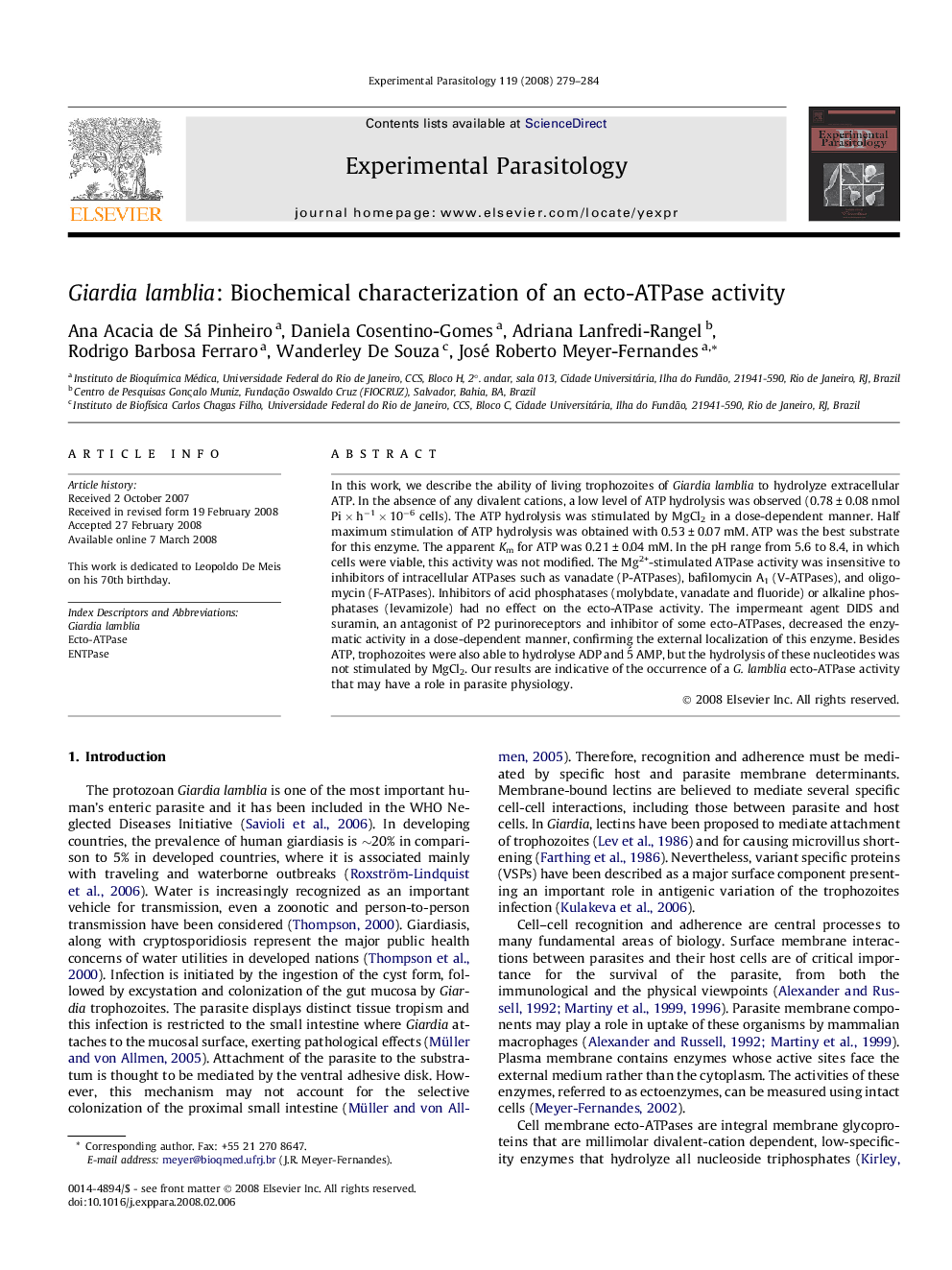| کد مقاله | کد نشریه | سال انتشار | مقاله انگلیسی | نسخه تمام متن |
|---|---|---|---|---|
| 4372142 | 1302569 | 2008 | 6 صفحه PDF | دانلود رایگان |

In this work, we describe the ability of living trophozoites of Giardia lamblia to hydrolyze extracellular ATP. In the absence of any divalent cations, a low level of ATP hydrolysis was observed (0.78 ± 0.08 nmol Pi × h−1 × 10−6 cells). The ATP hydrolysis was stimulated by MgCl2 in a dose-dependent manner. Half maximum stimulation of ATP hydrolysis was obtained with 0.53 ± 0.07 mM. ATP was the best substrate for this enzyme. The apparent Km for ATP was 0.21 ± 0.04 mM. In the pH range from 5.6 to 8.4, in which cells were viable, this activity was not modified. The Mg2+-stimulated ATPase activity was insensitive to inhibitors of intracellular ATPases such as vanadate (P-ATPases), bafilomycin A1 (V-ATPases), and oligomycin (F-ATPases). Inhibitors of acid phosphatases (molybdate, vanadate and fluoride) or alkaline phosphatases (levamizole) had no effect on the ecto-ATPase activity. The impermeant agent DIDS and suramin, an antagonist of P2 purinoreceptors and inhibitor of some ecto-ATPases, decreased the enzymatic activity in a dose-dependent manner, confirming the external localization of this enzyme. Besides ATP, trophozoites were also able to hydrolyse ADP and 5´ AMP, but the hydrolysis of these nucleotides was not stimulated by MgCl2. Our results are indicative of the occurrence of a G. lamblia ecto-ATPase activity that may have a role in parasite physiology.
Journal: Experimental Parasitology - Volume 119, Issue 2, June 2008, Pages 279–284